Primary navigation
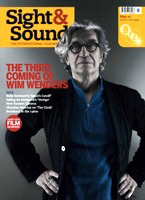
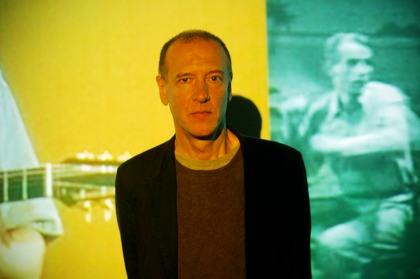
A 24-hour montage of film clips showing the measurement of time, Christian Marclay’s The Clock has hooked viewers in London and New York. He talks to Jonathan Romney
On my way to a one o’clock interview with Christian Marclay (pictured above), I receive a text message from him: “Running 10 mins late sorry.” I immediately realise I have a neat irony on which to open this article: if Marclay can’t be bang on time, who can? For surely few people know as much about time-keeping as this American-born, Swiss-raised artist and musician, creator of the extraordinary video work The Clock. This is one of those rare pieces – along with certain Turbine Hall installations, and Douglas Gordon’s 24 Hour Psycho – that have achieved genuine crossover status, becoming popular beyond the art world. Towards the end of its debut run last autumn at London’s White Cube Mason’s Yard, queues ran around the block; when it went to the Paula Cooper Gallery earlier this year, The Clock stirred New York critics (of art, but also of film and music) to rapturous descriptive fugues. It can currently be seen (until 17 April) as part of British Art Show 7 at London’s Hayward Gallery.
First some simple description: The Clock is a single-screen assemblage of film and TV clips, sometimes as short as a second, from several thousand films, both celebrated and obscure, high- and lowbrow (a single moment might source Bresson’s Pickpocket and a Columbo episode). The key criterion for these clips, gleaned by Marclay’s six researchers, is that they contain references to time. If a character looks at a wristwatch or glances up at a clock, the clip qualifies. The Clock also uses moments indirectly referring to time, or involving the relation of people and things to time: from characters nervously awaiting an appointed moment (a tryst, a courtroom hearing, their own execution) to markers of passing time such as candles burning or the progress of a stylus over a record. The film is an exhaustive typology of timepieces – fob watches, sundials, hourglasses et al – in a hierarchy topped by Big Ben, which recurs with haunting regularity as a marker of London location realism, while also serving as prop for Harold Lloyd-style derring-do in the 1978 remake of The Thirty Nine Steps.
But the crucial thing about Marclay’s assemblage is that it is time-specific: if you walk into the gallery at 5.15pm, the timepieces on screen show 5.15. Come at midnight, and Big Ben will be striking twelve. The Clock is perfectly synchronised and calibrated – it is itself, to all intents and purposes, a fully functioning clock.

This precision yields several extraordinary effects, some of which may be fully evident only to a hypothetical viewer watching the film in its 24-hour entirety. (There have been 24-hour screenings, but to Marclay’s knowledge, the longest stint by any viewer has been eight hours.) One effect is a strangely addictive, mesmeric quality; the first time I visited The Clock, two hours slipped by like a breath. As happens when you watch any involving film, you lose your immediate sense of duration, and yet – here’s the wonderful paradox – The Clock constantly reminds you of the exact time. Your watching time is metered by the piece itself.
What’s more, The Clock is extremely entertaining, partly because Marclay has crafted it with a strong narrative (and comic) sensibility, partly because the selection of clips based on the single criterion of time-reference yields startling new meanings. Beneath the meticulously contrived semblance of narrative continuity run various discontinuities – for example, between the actual time when a film was made and the time at which its story is set. In one sequence Romola Garai, driving a car in Glorious 39 – set in the 30s but made in 2009 – is chased by Burt Reynolds in the 1970s; elsewhere, Jean-Pierre Léaud in 1970s Paris pursues the doomed ‘Kolley Kibber’ in the 1947 Brighton Rock. Some juxtapositions yield conceptual puns: “the sound of actual time arriving” invoked in an obscure 1980s science-fiction film is a noise of motors that heralds the arrival of bikers Peter Fonda and Dennis Hopper in Easy Rider (1969).
Thus film and television history is co-opted into a promiscuously goofy Hellzapoppin’-esque collage. But The Clock is also a film of considerable philosophical density. It invites us to examine the way time – or the effect of time – is created and structured in film. We become aware of different intensities of film time. There are moments of heightened tension (‘hot’ time, you might say) in which events happen, or are keenly anticipated: notably the run-up to midday, a moment awaited in The Clock by a heteroclite mob including Moritz Bleibtreu, Gene Hackman and, of course, Gary Cooper in High Noon. Then there are the slow, seemingly vacant moments – ‘cool’ time – in which characters lounge around or emerge from late slumber (3pm, we learn, is a prime waking hour for artists and drunks). We too become acutely aware of time in the outside world; emerging from The Clock, you can expect your sense of the passing minutes to be curiously heightened for a good hour or so.
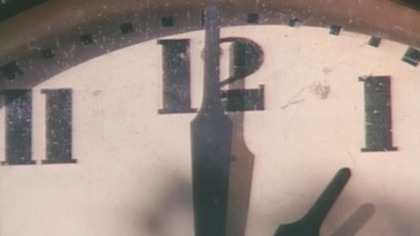
When he embarked on the two years it took to make The Clock, Marclay – now resident in London, but long associated with New York’s art and experimental-music scenes – was unaware of the conceptual complexities the project would yield. “The material comes first,” he explains. “Then I project into it ideas and themes and things that I’ve been thinking about over the years.”
Sitting in a cramped, sober studio in Clerkenwell, the soft-spoken Marclay speculates on reasons why The Clock has captured imaginations: “People like numbers – it’s 24 hours, and ‘How long did it take you?’ and ‘How many films?’ and ‘How many hours a day did you work?’ It has this marathon aspect. It’s almost like an ambient piece that you visit once in a while – you don’t have to pay attention to it for 24 hours.”
The Clock is very much a handmade artefact, in that the visual edit was entirely done by Marclay himself. But he also worked with six researchers. “What they did was rent movies, watch them and bring me all the time-specific references and anything that had any connection to time,” he says. “There was an element of chance – a lot of it was from films I hadn’t seen. We structured the search, so one was watching westerns for a while, and one woman was really into chick films. I’d forget where a clip came from – it became a piece of the puzzle, and it became very easy to take it out of context and create something else with it.” There were unexpected cultural discoveries too: an investigation of Bollywood films yielded next to nothing in the way of time references.
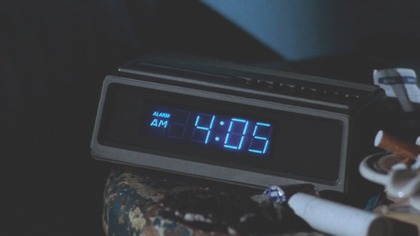
Marclay assembled his edit in hour-long chunks, the 24-hour cycle giving him enormous scope, but also confining him to a minute-by-minute grid. “A 10.01 clip has to be within that minute, at 10.01,” he says. “But within that minute I can place it anywhere – a minute is long in film, or it can be very fast. Then, in between, I have these joints – scenes that are not time-specific, but have to relate to the previous clip and the next one and articulate those fragments and create a flow. What I put in those joints is very much personal interests. Then there’s the more general idea of time – so someone waiting has a body language that expresses impatience or longing or boredom. Sometimes it can be more symbolic – memento mori images, like a flower wilting, a petal falling, the sun setting.”
The Clock is Marclay’s latest essay in visual collage, following the seven-minute Telephones (1995), a quick-fire volley of phone calls in film, and the 14-minute four-screen Video Quartet (2002), which placed clips side by side to make musicians in different films perform in unison. From Video Quartet’s simultaneity, Marclay shifts to a strictly sequential form in The Clock – but at wildly ambitious length. The Clock might be compared to a range of collage films – the works of Gustav Deutsch or, in the exhaustiveness of its appropriation, Godard’s Histoire(s) du cinéma. But perhaps the film it most immediately resembles, with its exaggerated focus on a single theme and content, is one Marclay hasn’t seen: Thom Andersen’s Los Angeles Plays Itself (2003), in which the meaning of Hollywood cinema is reduced specifically to the multiple incarnations of a single city. Thus an arbitrarily chosen element that was subsidiary in the original becomes the fundamental theme of the new product; like Andersen’s film, The Clock is poised between scholarly focus and fetishistic obsession.
What’s remarkable about The Clock is the way that, from extreme fragmentation and multiplicity, Marclay has created a smooth continuity – or at least the illusion of one. That smoothness may seem at odds with the hyper-fragmentation that Marclay has celebrated in his work as an experimental turntablist, whether solo or collaborating with the likes of John Zorn, Elliott Sharp and Sonic Youth. But, he says, “I’ve grown tired of the jump cut – the fast edit – that we see in everything. The false continuity that I was trying to create [in The Clock] is, to me, more connected to the way time flows. There can be a seamless flow and momentum of a gesture from one film to the next, but it jumps from colour to black and white, and you know it’s not true, but you still believe in it. It deconstructs cinema –you see all the tricks, and you understand the vocabulary.”
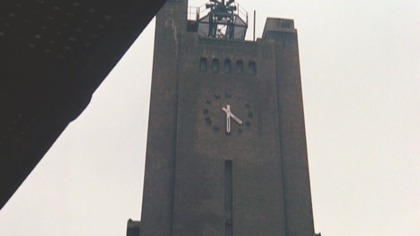
A key element in The Clock’s seamlessness is the contribution of sound designer Quentin Chiappetta. His restructuring of the clips’ soundtracks, running certain sounds over extended sequences of montage, sutures the disparate material into brief micro-narratives. Take the explosive chorus of clocks striking at noon, culminating in a toll of bells from Charles Laughton’s Quasimodo. Or the juxtaposition in which a clanking sound that worries Ed Asner in a recent US film turns out to be made by Lee Kang-Sheng banging a watch on a rail in What Time Is It There?, Tsai-Ming Liang’s 2001 film about the existential problems caused by the time difference between Taipei and Paris.
There is, Marclay admits, an element of cheating in The Clock, required by the fundamental need to sustain a continuous present. Voiceovers posed a problem, as they imply the past tense. So in scenes with voiceover – or obtrusive music – Chiappetta would strip the sound off entirely and create new Foley effects. recreated certain sounds from scratch,” says Marclay. “I’m talking about one per cent of 24 hours, but just that is a lot of work.” As an example, Marclay shows me the original and reworked versions of a moment from One Night at McCool’s (2001), in which Matt Dillon’s character steals a Rolex. In the original there’s a score, and Dillon narrates the events we’re seeing; the new version, with only diegetic sound effects framed in silence, makes for much more dramatic action.
The Clock also contains elements that might be read as self-referential jokes, hidden ‘signatures’ alluding to Marclay’s own history. Crowds gather in Leicester Square to look at the mechanical clock of the old Swiss Centre: Marclay, appropriately for a clock-maker, was educated in Switzerland. Another extract refers to Marclay the DJ: in The Prisoner, Patrick Cargill puzzles over a character’s interest in 45rpm records (“You say that he was timing them?”). Marclay has a long history of manipulating vinyl discs, both as repositories of recorded sound and as concrete objects: a record, he says, represents “a disruption of time – capturing time, trying to hold it back; so again, this idea of the memento mori. There’s a lot of turntables and records in The Clock.”
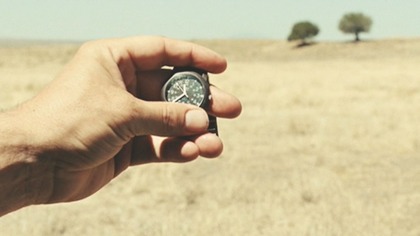
Another beautiful memento mori is the way some actors appear as both their old and young selves: Marclay was particularly touched by the various apparitions of Michael Caine and Maggie Smith, while the hours between 3pm and 5pm offer a potted achronological biography of Jack Nicholson (whose most venerable incarnation is a literally clock-watching man on the verge of retirement in About Schmidt).
For most viewers, The Clock’s night passages will be the unseen dark side of the moon. Marclay tells me that, along with a moderate increase of sex and horror after midnight, there’s a lot of material involving people trying to get to sleep (it was also particularly hard to find clips set between 5 and 5.30am). For those who have done the night shift at the 24-hour screenings, he says, “It becomes a collective experience. You’re aware of these other people who are willing to stay and fight their sleep – which is hard, because you see all these people in bed and watching TV and being comfortable, and there you are, tired. That tension is really great.”
Indeed it’s the communal experience of watching the work, while the actors on screen also appear to live in real time, that lets The Clock transcend its pre-constructed status and acquire something of the quality of live performance. “To me, what makes it work is that you become part of this experience,” says Marclay. “You’re aware of when you started looking at it, and you know how much time you’ve spent there – so you have to make choices. You might have an appointment in half an hour – maybe you can stay another ten minutes and be late, or forget about the appointment and just stay. These choices make you hyper-aware, and you become an actor in the film. People become totally aware that their life is linked – their life is synched – with this thing.”
‘The Clock’ is part of British Art Show 7 at Glasgow, 28 May–21 August, and Plymouth, 17 September–4 December.
Antonioni: the afterlife: Chris Darke on the late Italian master’s influence on recent films, plays and books (March 2011)
Quartet for four cameras: Daniel Trilling reviews Mike Figgis’s live remix of Timecode (September 2010)
Double Take reviewed by Jonathan Romney (April 2010)
We have always recycled: archivist Rick Prelinger sketches an alternative history of found-footage filmmaking (March 2010)
I, a man of the image: Jean-Luc Godard talks to Michael Witt (June 2005)
What Time Is It There? reviewed by Tony Rayns (July 2002)
Don’t fence me in: Danny Leigh on the appeal of Jack Nicholson (May 2003)